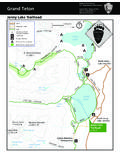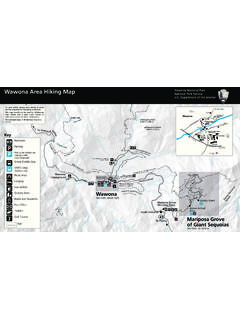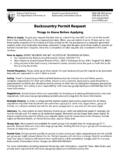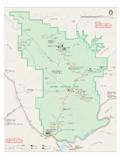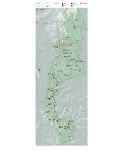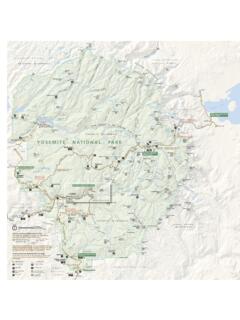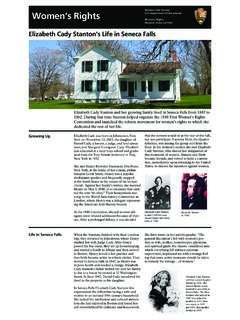Transcription of Chapter 11 SPECIALIZED BLASTING TECHNIQUES
1 167 This Chapter includes information about: Avalanche BLASTING Animal Carcass Removal 105-M 102 Howitzer Boulder BLASTING Military Weapons Air Gapping Fireline Explosives Expansion Alternatives Burnol Backfiring DevicesSECTION 11A - AVALANCHE BLASTINGSECTION CONTENTS: Initiating Devices Explosive Assembly Use of Hand Charge Cornice Control Explosive Safety Recoilless Weapons - Military Weapons AvalauncherAVALANCHE BLASTINGS lope testing, avalanche release, and snow stabilization are the main objectives for using explosives inavalanche BLASTING . To achieve these objectives, a standard charge is used that is capable of developing deto-nation pressure equal to 1 kg of 11 SPECIALIZEDBLASTINGTECHNIQUES 168 There are several types of explosives that can develop the appropriate detonation pressure.
2 By knowingthe detonation velocity and the density of a given explosive, the detonation pressure can be calculated (Chapter2 - Explosives).INITIATING DEVICESA valanche BLASTING is based on a nonelectric detonating system or systems that are not susceptible toinitiation from the high static electricity that is prevalent in snowstorms and near ridge crests. Even with non-electric BLASTING caps, avalanche BLASTING should not be conducted when there is evidence of a strong staticelectricity field (cumulonimbus clouds, electric buzzing).Cap-and-Fuse - A cap-and-fuse assembly can detonate explosives that are sensitive to a No. 6 cap (Figure 11-1). However, in severe winter weather, some primers with low proportions of sensitizers may require a No.
3 8cap or larger. BLASTING caps are susceptible to accidental ignition from excess heat, friction, or static electricityand should be handled with great care. Where adverse conditions are expected (static electricity), other tech-niques should be used or the BLASTING operation should be shut down.(Figure 11-1) Dupont nonelectric BLASTING highest quality safety fuse should be used. The fuse length depends on the time needed to escape theblasting location. Always add a margin of safety. After a new roll of fuse is purchased, a test segment should beignited and the burning rate should be timed. Under no circumstances should a fuse be cut to a length thatallows fewer than 120 seconds burning time or less than state law allows.
4 (Times may be greater is some states.)Safety fuse should be stored, uncoiled, and assembled to the cap at room temperature under controlledconditions. Fuse should be cut squarely and inserted in the BLASTING cap immediately. A clean, square cut (Figure11-2a) allows proper assembly. Cutting on the slant (Figure 11-2b) prevents seating. Under no circumstancesshall an ignitor be placed on the fuse until the charge is to be detonated.(Figure 11-2) Proper cap and fuse assembly. 169 Nonelectric Detonating System (Nonel) - This is a thin plastic shock tube that has a light dusting of reactivepowder on the inside surface (approximately one pound per 70,000 feet).
5 When initiated, this tube willreliably transmit a low-energy signal from one point to another by means of a shock wave phenomena muchlike a dust explosion. It will reliably detonate around sharp bends and through kinks. Because the detonationis sustained by such a small quantity of the reactive material, the outer surface of the tube remains intactduring and after functioning. Nonel can be initiated by detonating cord or by a BLASTING cap. It will reliablyinitiate instant or delay Nonel BLASTING (Exploding Bridgewire) - Exploding bridgewire detonators do not contain any primary explosive andare not detonated by stray currents, static electricity, radio transmission, or fire. A large, precisely timedelectrical pulse from a special firing set is required to detonate an EBW.
6 This firing set delivers the requiredelectrical charge to the detonator through a maximum of 2500 feet of hookup wire. Three detonators, theRP-80, the RP-83, and the RP-501, may be used with this ASSEMBLYCast Primers - Cast primers are usually high-density, pressed, or cast cylinders of TNT, RDX, Pentolite,and/or other ingredients. They are fast, powerful explosives that are relatively insensitive to accidental deto-nation by shock or friction. Most were developed by the military to withstand the rigors of the can be produced by volatilization in overheated magazines, but are caused most often by skinabsorption from handling charges. One disadvantage of TNT is that it leaves a messy black crater; anotherdisadvantage is high cost.
7 Pure TNT is not reliably detonated by No. 6 or No. 8 BLASTING caps, so cast primersof TNT include a more sensitive explosive, such as Primers - Gelatin primers are less expensive than cast primers and do not leave a black crater. Theymay detonate as fast as TNT, but are slightly more bulky. They have a high percentage of nitroglycerinmixtures; they produce headaches, deteriorate, and are more shock-sensitive than cast primers. Nitroglycerinbegins to freeze at -29 degrees Centigrade (-20 degrees Fahrenheit) and, if frozen, is very susceptible topremature detonation when punched. Therefore, it should not be used near this low temperature. NEVER attempt to thaw frozen dynamite by applying direct heat.
8 Place it in a normal temperature room and allow itto gradually reach room Explosives - Gelatin and cast primers are classified as high explosives and must be storedand handled according to strict codes (see Chapter 3 - Storage). Because of regulations dealing with explo-sives security, storage is expensive. Where there is a limited need for explosives, avalanche workers may wishto avoid the more expensive storage requirements by using a two-component system. Stored separately, thecomponents are not high explosives. They are classified as high explosives only when storage advantage is offset by higher cost of materials, bulkier charges, the inconvenience of mixingthe explosive in the field, and the requirement of a mixing time of about one-half hour to bring the mixture tofull strength.
9 Mixing should be done at temperatures of 0 degrees Centigrade (32 degrees Fahrenheit) orabove. Once mixed, the explosives will detonate at -50 degrees C or lower. When using two-componentexplosives where the charge will be thrown, tape the cap to the container to avoid separation and Considerations - As soon as the cap-and-fuse is inserted into the explosive, the system is this instant, the relatively insensitive explosive contains a sensitive cap and is vulnerable to accidentaldetonation. For this reason, delay arming as long as possible. Usually it is possible to arm the explosive justbefore tossing the charge onto the target. However, when wind and temperatures are severe, overall safety is 170sometimes served by arming the explosives in a shelter before starting on the control route.
10 Under no circum-stances should the ignitor be put on the fuse until just before tossing the Cast Primer - Figure 11-3 shows the steps for double arming cast primers. Most cast primers aremanufactured with a hole through the middle, and an off-center hole that does not go all the way through theprimer. The central hole is designed to be detonated by high-explosive detonating cord. The off-center hole isusually lined with a primer, that is sensitive to a No. 6 BLASTING cap. It is essential to place the cap in the properhole to avoid a misfire. In avalanche work it is convenient to lace the fuse tightly through the central hole andthen into the off-center hole, snug against the end of the hole.



